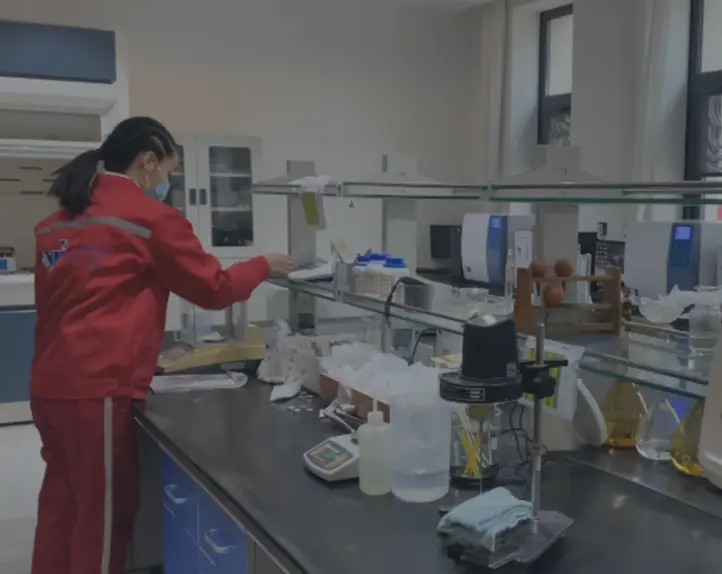
дек. . 25, 2024 23:38 Back to list
methylhydroxyethyl cellulose
Understanding Methyl Hydroxyethyl Cellulose Properties and Applications
Methyl Hydroxyethyl Cellulose (MHEC) is a non-ionic cellulose ether that has gained significant attention across various industries due to its unique properties and versatility. Derived from natural cellulose, MHEC is synthesized through a process that introduces methyl and hydroxyethyl groups onto the cellulose backbone. This modification enhances its solubility and usability in both aqueous and non-aqueous systems, making it an invaluable ingredient in numerous applications.
Chemical Composition and Properties
MHEC possesses a distinct chemical structure that underlines its functional characteristics. The methyl groups, provided by methylation, impart hydrophobicity, while the hydroxyethyl groups increase hydrophilicity. This dual nature allows MHEC to dissolve in water and provides it with thickening, stabilizing, and film-forming properties. The degree of substitution, which indicates the average number of substituents per anhydroglucose unit, plays a crucial role in determining the rheological behavior of MHEC solutions. Higher degrees of substitution typically lead to increased viscosity and enhanced performance characteristics.
Additionally, MHEC is characterized by its excellent thermal stability, chemical resistance, and ability to form transparent films, making it suitable for various environmental conditions. It is also non-toxic and biodegradable, aligning with the growing demand for eco-friendly materials in modern applications.
Applications in Different Industries
MHEC finds extensive usage in several sectors, including construction, pharmaceuticals, food processing, cosmetics, and personal care products.
1. Construction Industry One of the most prevalent applications of MHEC is as a thickening agent in construction materials such as tile adhesives, cement-based mortars, and plastering compounds. Its ability to retain water enhances workability and extends the open-time of these materials, allowing for better application and finishing. Moreover, MHEC improves adhesion and reduces sagging, ensuring structural integrity.
methylhydroxyethyl cellulose

2. Pharmaceuticals In the pharmaceutical industry, MHEC is utilized as a binder, dispersant, and film-forming agent in tablets and granules. Its non-ionic nature prevents interactions with active pharmaceutical ingredients, enhancing the stability and release profiles of medications. Additionally, MHEC is used in formulations for controlled release, ensuring that drugs are released at a predetermined rate.
3. Food Processing MHEC also plays a crucial role in the food industry, serving as a thickener, stabilizer, and emulsifier. It is commonly used in sauces, dressings, and dairy products to improve texture and prevent ingredient separation. Its ability to form gels under certain conditions makes it an attractive option for creating low-calorie products without compromising mouthfeel or flavor.
4. Cosmetics and Personal Care In cosmetic formulations, MHEC is valued for its film-forming and moisturizing properties. It is widely used in creams, lotions, and shampoos, providing a smooth texture and improved sensory characteristics. Furthermore, its ability to retain moisture makes it an effective hydrating agent, stimulating consumer interest in skincare formulations containing MHEC.
Environmental and Health Considerations
As industries increasingly prioritize sustainability, MHEC stands out due to its biodegradable nature and minimal environmental impact. Derived from renewable resources, it provides a viable alternative to synthetic polymers that are often associated with environmental pollution. In terms of health, MHEC is considered safe for use in food and cosmetic applications, as it does not pose significant toxicity risks. Regulatory agencies evaluate and regulate its use, ensuring consumer safety.
Conclusion
Methyl Hydroxyethyl Cellulose is a remarkable compound that reflects the intersection of natural products and modern technology. Its diverse applications across multiple industries testify to its effectiveness as a functional ingredient. As industries evolve and adapt to changing consumer demands, MHEC’s versatility and eco-friendliness position it as a staple in formulations that prioritize quality, stability, and sustainability. Whether in construction, pharmaceuticals, food, or cosmetics, MHEC continues to play a vital role in enhancing product performance and meeting the needs of a dynamic market. The continued research and development in this area promise even broader applications and innovations in the future, making MHEC a substance worth further exploration.
-
Versatile Hpmc Uses in Different Industries
NewsJun.19,2025
-
Redispersible Powder's Role in Enhancing Durability of Construction Products
NewsJun.19,2025
-
Hydroxyethyl Cellulose Applications Driving Green Industrial Processes
NewsJun.19,2025
-
Exploring Different Redispersible Polymer Powder
NewsJun.19,2025
-
Choosing the Right Mortar Bonding Agent
NewsJun.19,2025
-
Applications and Significance of China Hpmc in Modern Industries
NewsJun.19,2025







